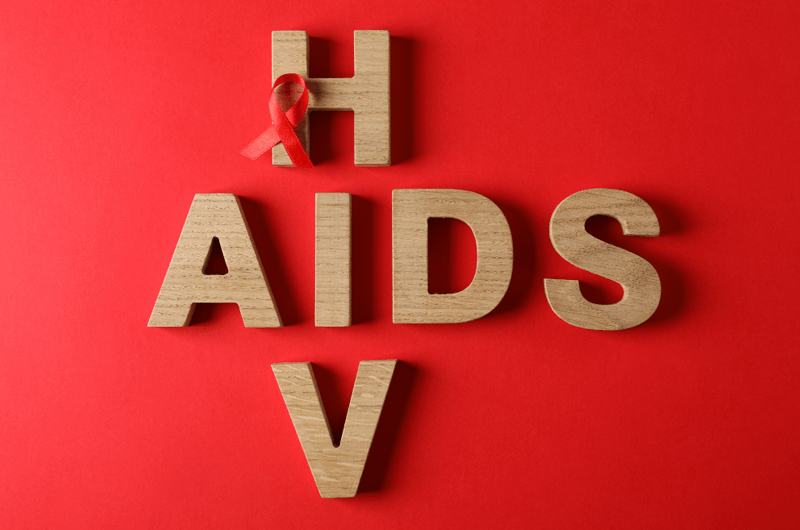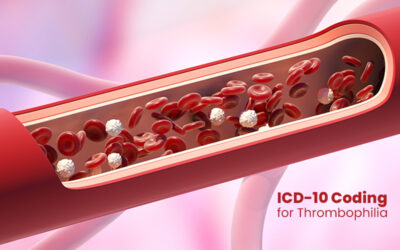This update replaces our September 16, 2015 blog “Medical Coding for HIV Screening and Diagnosis“.
Human Immunodeficiency Virus (HIV), is a retrovirus that wipe outs the immune system, hindering the body’s ability to fight infections and causing some lymphomas, other malignancies, and infections to develop. According to the U.S. Centers for Disease Control, 1.1 million people have HIV in the United States. One in seven Americans are living with HIV but are not aware of it, and 2014 data showed that 50 percent of all new HIV infections occurred in the southern states. Blood and saliva tests are used to diagnose these conditions. When it comes to reporting HIV and AIDS, physicians and medical coding companies need to be well aware about how the code selection process works. A recent article published online in the Journal of AHIMA makes some important clarifications on coding for HIV and AIDS in ICD-10.
The ICD-10 codes for HIV and AIDS diagnoses are:
B20 – Human immunodeficiency virus [HIV] disease
- HIV disease
- AIDS
- AIDS – related complex [ARC]
- AIDS – related conditions
- HIV infection, symptomatic
Z21 – Asymptomatic human immunodeficiency virus [HIV] infection status
- HIV infection
- HIV positive
- HIV
- Known HIV
- HIV virus
- HIV status
- HIV test positive
- HIV infection, asymptomatic
-
- While both codes mention “human immunodeficiency virus [HIV],” the disease is only included in B20 and infection is only included in Z21.
- The distinction in code assignment is based on whether or not the patient has the disease or if the patient is only a carrier of the virus.
- “Asymptomatic” and “symptomatic” refer to stages in the disease process.
- Coders can assign the right code only if physician clearly specifies the stage of the disease or documents the cause and effect relationship with “symptoms/conditions” in the record. The following options should be included in physician documentation clarification (PDC) to clarify the status of disease:
- HIV positive status only
- AIDS
- Other
- Clinically unable to determine
- Only confirmed cases of HIV infection/illness – inpatient and outpatient – should be coded.
- All that is required to confirm the diagnosis is the physician’s statement that the patient is HIV positive or has an HIV-related illness.
- The reason for the admission or encounter determines the proper sequencing for HIV.
- If a patient is admitted for an HIV-related condition, B20 Human immunodeficiency virus (HIV) disease should be sequenced first, followed by additional diagnosis codes for all reported HIV-related conditions. Kaposi’s sarcoma, lymphoma, Pneumocystis carinii pneumonia (PCP), cryptococcal meningitis, and cytomegaloviral disease are considered opportunistic infections and always regarded as HIV-related.
- If a patient ever has a symptom due to a HIV infection, only B20 is coded and Z21 should never be coded again, according to the ICD-10-CM Official Guidelines.
- Suppose a patient with HIV disease is admitted for an unrelated condition such as a fracture. Here, the code for the unrelated condition should be sequenced first. B20 should be reported as an additional diagnosis, along with any HIV-related conditions.
- When the patient is HIV positive and does not have any documented symptoms of an HIV-related illness, use Z21. This code should not be applied if the term AIDS is used. If the patient is treated for any HIV-related illness, or is described as having any condition resulting from HIV positive status, use B20.
- If the HIV serology is inconclusive and the patient has is no definitive diagnosis or manifestations of the illness, code R75 Inconclusive laboratory evidence of human immunodeficiency virus (HIV) may be assigned
- Code Z11.4 Encounter for screening for human immunodeficiency virus [HIV] should be used if patient is being seen to determine HIV status.
- If a patient has signs, symptoms or illness, or a confirmed HIV-related diagnosis be tested for HIV, the signs and symptoms or the diagnosis should be coded. If the results are positive and the patient is symptomatic, B20 should be applied with codes for the HIV-related symptoms or diagnosis.
- For counseling provided for patients with positive test results, use HIV counseling code (Z71.7).
- If a patient reports that he/she may have been exposed to or has come into contact with the HIV virus, report Z20.6.
Diagnostic coding for HIV/AID is complex. AAPC-certified coders in a reliable medical billing and coding company will accurately select the correct principal diagnosis and code at the highest level of reimbursement after reviewing the entire medical record and apply official coding guidelines found in the ICD-10-CM Official Guidelines for Coding and Reporting. They will also confirm conflicting documentation through physician document clarification.




